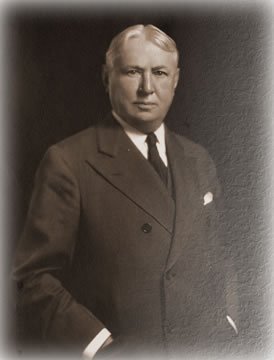Who was Edward G. Miner?
 Edward Griffith Miner was born 19 December 1863 in Waverly, Illinois. Though his father was a graduate of the Jefferson Medical College (1861), Miner's own education consisted of "a common school and high school education, such as was furnished in those days...supplemented by the books in my father's and grandfather's libraries."
Edward Griffith Miner was born 19 December 1863 in Waverly, Illinois. Though his father was a graduate of the Jefferson Medical College (1861), Miner's own education consisted of "a common school and high school education, such as was furnished in those days...supplemented by the books in my father's and grandfather's libraries."
In July 1883 he left Illinois for Rochester, where he became secretary to the cousin who founded the company which Miner would be associated for 48 years. Assuming increasing responsibility, Miner gradually transformed Pfaudler Company into an international operation and the world's largest manufacturer of glass-lined steel containers.
Edward Miner was a trustee of the University of Rochester for more than 40 years, and a chairman of the Board of Trustees from 1938 to 1945. During this period he was also deeply involved in the University Library. He donated many volumes to its collections, but more importantly, was instrumental in the acquisition of several monographic and manuscript collections on the antiquarian market.
His bibliographic interests were extended to the library of the School of Medicine and Dentistry when the medical school opened in 1925. Miner was befriended by the young chairman of the Department of Anatomy, George Washington Corner (1889-1981). As an historian and chairman of the Library Committee, Corner was anxious to solicit community support for the development of a medical-historical collection, and indeed is largely responsible for initiating the rare book collection the Library has today.
In April 1927, through Corner's encouragement, Miner presented the Medical Library 41 titles on yellow fever, the first of many donations which he would make to the collection until his death in 1955. In recognition of his services to the University of Rochester and its libraries, the Medical Library was named in honor of Edward G Miner in December, 1952.
You can explore our Yellow Fever Collection in New York Heritage Digital Collections
This digital collection contains more than 400 works on yellow fever published between 1741 and 1914 - works of those who actually saw yellow fever, who were puzzled by it, and who tried to prevent or cure it. The occurrence of yellow fever in the Caribbean, the Middle Atlantic States, the Mississippi Valley and several European ports is abundantly documented.
The digitization of the Yellow Fever Collection is made possible through a generous gift from Ranlet and Beth Miner.